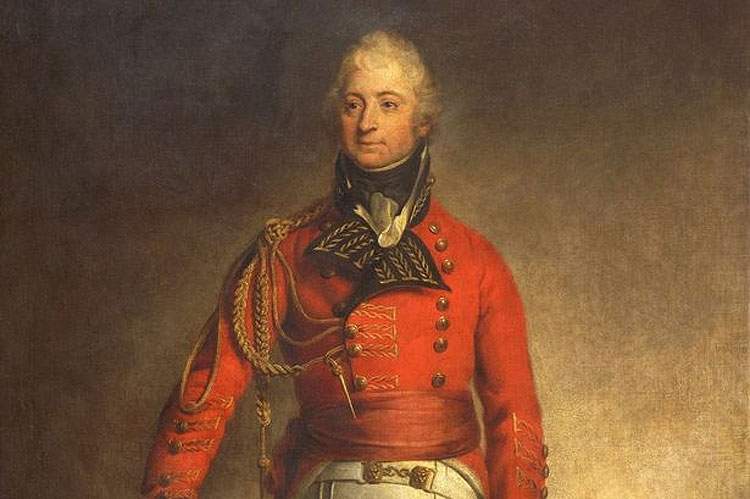The National Museum of Wales in Cardiff will temporarily remove from display the portrait of an important Welsh general in the British army of the Napoleonic era, Thomas Picton, celebrated as a hero because he died during the Battle of Waterloo (he was the highest-ranking British officer who fell on Belgian soil). The reason? Picton, when he served as governor of Trinidad shortly after the British government conquered the island (specifically from 1797 to 1803), behaved brutally toward the slaves he owned in the New World. For this reason, his portrait, by Martin Archer Shee (Dublin, 1769 - Brighton, 1850) has been moved to storage for the time being, awaiting relocation with some sort of frame explaining who Picton was and what he did in America.
Picton is an important figure in the history of Wales. The Duke of Wellington, commander of the coalition army that defeated Napoleon at Waterloo, described the Welsh general as “as uncouth and foul-mouthed a devil as ever there was, but who always behaved well.” actually, the second part of the sentence does not quite match reality, because in spite of his many military successes (so much so that after his demise he was always considered, as mentioned above, a hero), in Trinidad he was guilty of atrocities and ruthlessness towards the native slaves-a violence that has been systematically forgotten, according to the National Museum of Wales. For his brutality he also suffered a trial, in 1803 in London: he was accused of authorizing torture on Louisa Calderon, a 14-year-old girl accused of theft (Picton had her hung from a scaffold with her wrists bound for nearly an hour). During the same period, Picton was investigated for having slaves accused of witchcraft and necromancy tortured, beheaded and burned alive, and it also appears that the military under his orders made systematic use of hangings and mutilations as means of keeping slaves under control. Picton was later convicted, but the sentence was later overturned.
The painting is, moreover, of some importance and is very much linked to the history of the museum, since it entered it, following a donation, in 1907, the year the National Museum of Wales was founded: it is thus one of the paintings from the institution’s first nucleus. In order to decide what to do about the painting, a special commission, called “Reframing Picton” (“Recontextualizing Picton”), had been appointed in October, and included members of the museum and Trinidadian artists. The decision was therefore to remove the painting in order to, precisely, recontextualize it in the future, so that all visitors who see it will be able to learn in detail about Picton’s story. Instead of Picton’s portrait, another portrait, known as Hedger and Ditcher: Portrait of William Lloyd, and the work of Albert Anthony Houthuesen, will be displayed: it is a portrait of a humble gardener.
“This is another important step in analyzing our national collections and who we exhibit in our ’Faces of Wales’ gallery and why,” said Kath Davies, director of the museum. “This project replaces a work of art (which attaches great importance to someone whose actions as governor of Trinidad even at the time were seen as cruel) with a celebratory portrait of a worker, someone we might consider a hero today. Looking to the future, the National Museum of Wales will create educational resources on the history and achievements of communities experiencing racial inequality within our society.”
 |
| National Museum of Wales removes portrait of a cruel general with his slaves |
Warning: the translation into English of the original Italian article was created using automatic tools. We undertake to review all articles, but we do not guarantee the total absence of inaccuracies in the translation due to the program. You can find the original by clicking on the ITA button. If you find any mistake,please contact us.